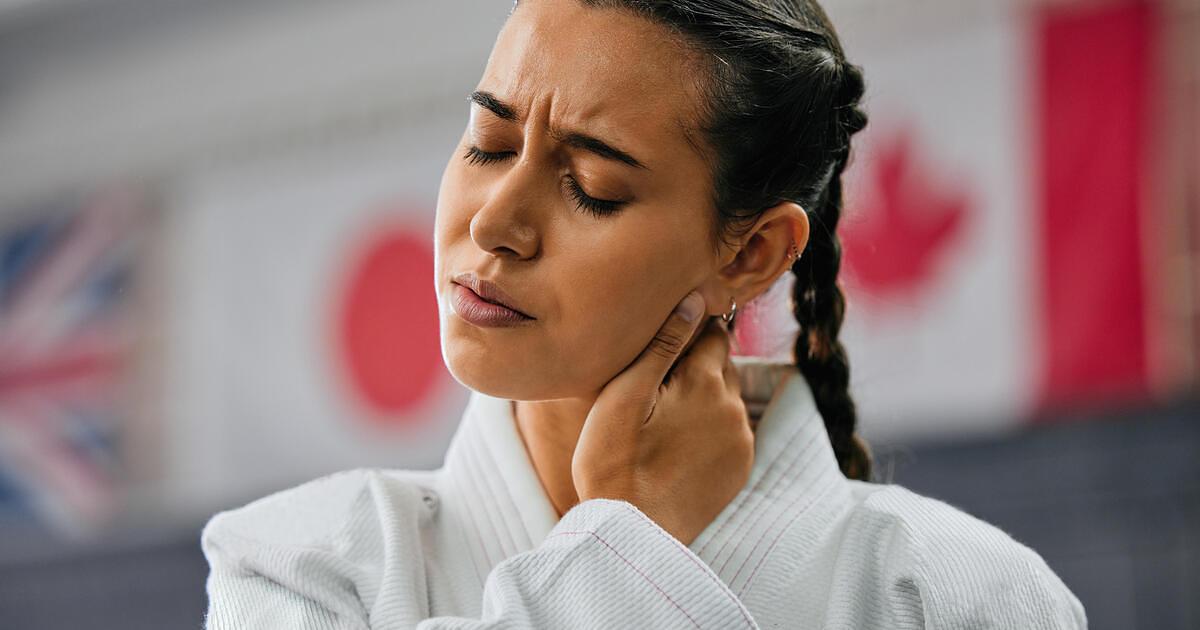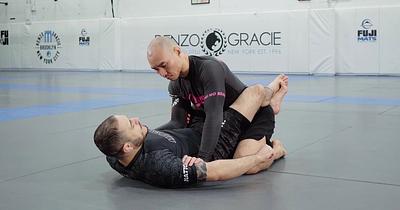The Most Common Injuries in Brazilian Jiu-Jitsu and How to Avoid Them
by Team Digitsu
Updated: March 24, 2025

Brazilian jiu-jitsu is a fun and active sport. It is a type of martial art gaining popularity due to its effectiveness in self-defense and combat sports. For people who love to keep fit in different ways, integrating Brazilian jiu-jitsu works effectively. This unique martial art focuses on grappling techniques and securing a mount on an opponent. Once secured, you subdue them by applying chokeholds, takedowns, sweeps, throws, and joint locks. Anyone who trains in BJJ understands that getting banged up isn't a choice. This is an intensely active activity, and you'll feel all good at one moment, then bang, another flare-up of pain or injury hits you.
While there are things one can do to decrease the risk of injury, BJJ is a contact sport, and injuries are bound to happen. This doesn't mean you don't engage in the sport anymore. This article aims to explain some of the most common injuries in BJJ and how to avoid and self-treat if possible.
Neck Injuries
Neck injuries are prevalent in BJJ. It happens when a fighter finds himself in an awkward position when deep stacked, when he posts with his head to avoid getting rolled, or when attempting to break free from a headlock.
If such an injury happens, it's vital to quickly determine if the injury is muscular or if a disc slipped out of place. Check to see if the injury makes it hard to turn the neck. If so, it's most likely a muscle injury. If the injury causes shooting or tingling sensations down the arm into the fingers, it's most likely a slipped disc causing nerve damage. Nerve pain is severe, and anyone who experiences these symptoms should immediately stop wrestling and see a doctor.
Lower Back Injuries
Lower back injuries are some of the most common injuries in BJJ. When sparring, most BJJ fighters use muscles within the pelvic area. This happens especially when they are in full guard on the bottom. If the opponent is significantly bigger than you and pushes your body awkwardly in the position, it can easily result in a pulled muscle in the lower back. The worst-case scenario is causing a disc in the spine to slip out of place forcefully. It causes severe pain, and one should stop sparring and see a doctor immediately. Hyperextension during a back mount, spinal twists, and shallow stacking techniques are some of the most common causes of lower back injury.
Knee Injuries
With knee injuries, the muscles or ligaments stabilizing the knees are affected. One can come down too hard on the mat, causing muscular injuries. Damage to the ligament happens when a fighter's knee gets hyperextended, and extra pressure is placed on the knee joint.
Muscular injuries are painful, but they mostly heal quickly. Ligament tear, on the other hand, is far more severe. If it is a partial tear, this means the fibers are still connected. In this case, healing is possible with ice for the pain and rest. If the tear is full, the ligaments are severed, and without surgery, they won't fuse back together. If the case is severe, it can mean months to years of rehabilitation.
Skin Injuries
BJJ is an active contact sport, and skin injuries are an inevitability. The most common skin injuries include bruises and hematomas, contusions, lacerations, and abrasions. Skin injuries in BJJ mainly don't require any treatment. One can interchangeably use rest, ice, compression, elevation, and injury-specific therapies known as RICE to heal. It, however, depends on the severity of the injury, and whatever the case, it's good to see a doctor and determine how serious of a treatment one requires. It is never a good thing to self-diagnose a skin injury. What one can classify as a superficial skin injury might be a deep muscle tear requiring specific treatment to heal.
Ear Injuries
In BJJ, it's called cauliflower ear, which is also inevitable due to all the grappling involved. It is so common in BJJ that some people use it to pick out BJJ fighters, wrestlers, and MMA fighters. It is, however, possible to prevent these injuries from getting out of hand.
The most severe cauliflower ear cases never happen all at once. It starts with a simple cartilage tear in the ear. It occurs when one rams the ear into the side of an opponent or when one smacks the mat hard. It causes a blood rush into the ear, and if not properly drained, it solidifies and hardens. This causes the cauliflower ear to grow bigger and bigger. Rest and drain the ear a few days after the injury to avoid cauliflower ear. When the blood is drained, new blood enters the ear, and the thick blood leaves. The amount of blood coming to the ear reduces in a week or two if one rests and avoids reinjury.
It is highly recommended to see a medical professional drain your ear, particularly an ENT (Ear, Nose, & Throat) specialist who often deals with these types of injuries. Not only will they do it effectively with minimal chance of infection, but they can also sew a button or fixture to the ear to keep it compressed and prevent it from expanding again. The earlier you get your ear treated, the better, typically no more than a week. After this, the cartilage hardens and can only be corrected with a more invasive cosmetic procedure.
Finger Injuries
Finger injuries are widespread in BJJ, mainly when training with the gi. This is due to the constant grip fighting from standing to every position on the ground. Typically these happen when your gripping a collar or sleeve and the opponent breaks your hold with force. Sometimes during a grip break excessive pressure causes sprain within the small ligaments of the fingers.
The typical protocol is to ice it immediately after injury. Then for future training sessions, tape the finger to support the sprained ligaments. It would be best to continue to tape the finger for a few weeks, even after the full range of motion is restored, to prevent re-injury. As usual, if the finger is very painful, out of place, or swelling/pain is not resolving independently, it's best to see a medical professional. Some BJJ athletes even tape all their fingers preventively to prevent injury in the first place.
Conclusion
With most BJJ injuries, it is best to see a doctor unless it is a simple laceration or abrasion. To reduce the chances of injury, competitors are advised to get a complete checkup of the body's functions before competition or training. This applies to processes related to nerves, cardio, and muscles. The checkup helps identify any underlying health issues, reducing the chances of injury. As you get older, you are often more likely to get injured unless you are careful, and it's recommended to follow specific tips for training at an older age.
Recovery also goes a long way toward reducing the chances of injury. Letting the body rest speeds up the healing process. According to many BJJ fighters, sleep should take up much of your recovery time. Avoid strenuous warm-ups or staying aggressively active during the recovery process. It is not recommended for a fighter to continue training if they haven't fully recovered. Pressure on the muscles and joints might worsen the condition, resulting in delayed recovery and affecting your performance in BJJ competitions. Training as much as you can in BJJ is a fantastic tactic. Recognize that you are fallible and control your ego. This way, you are not always sidelined by injury, and you learn as much as possible, helping you stay on top of your game.


